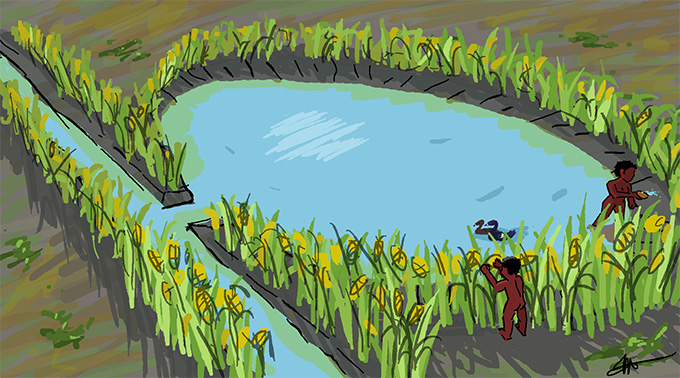Water engineers in ancient America of South America returned to Savannas seasonal seasonal in Amazonian Savannas in corn agriculture fires throughout the year.
Casaraba people built an innovative, previously unknown network of drainage channels and water storage that enabled two corn harvesters each year, say geoarchologist Umberto Lombardo of the Autonomous University of Barcelona and colleagues. Large -scale corn cultivation during the rain and dry parts of the year fueled the urban extension of Casaraba through Amazonian and Savannas forests in what is now Northern Bolivia, scientists report January 29 Nature.
Previous excavations dated by Casaraba society, which covered an area of 4500 square kilometers, between 500 and 1400. Casaraba people had access to a variety of food and crops, including corn, pelvis, pumpkin, kikir and yams. But investigators have not found any evidence of the Casarabi agricultural fields, raising questions about how farmers raised a lot of food to maintain a considerable population.

Instead of using a number of ancients available, Casaraba people turned Savanna into corn production centers, scholars say. “As the population grew and environmental pressures increased, they probably sought more reliable and sustainable protein sources,” Lombardo suggests. “Corn could have offered it to some extent.”
Using satellite images and terrestrial surveys of the Casarabe territory, the Lombardo team identified man -made basin clusters in two regions of Savana. The channels were excavated on the ground, designed using a felt -mounted distance technique called light detection and starting, or lidar, connected to many ponds. Leading away from pond clusters, the canals formed drainage networks consisting of increasingly deeper canals.
Earth samples from the edges of the drainage channels and ponds contain microscopic mineral formations, called phytolite, characteristic of corn. Cultivation has probably occurred along the channel boundaries and around the borders of the ponds, scientists suspect.
Radiocarbon dates for seeds and leaves indicate that farmers used a pond from about 1250 to 1550. But the age of the drainage system and other ponds remains unknown.
#Heres #ancient #Amazonians #corn #master #farmers
Image Source : www.sciencenews.org